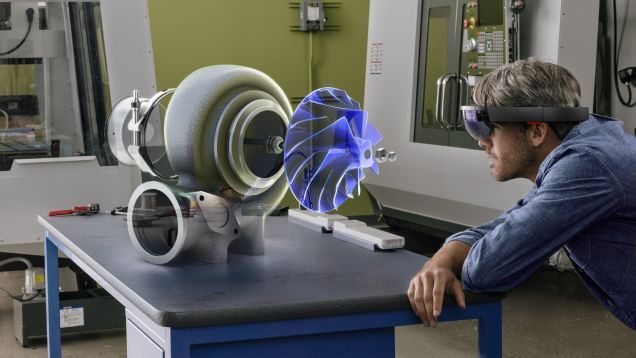Page 11265
Dec 17, 2015
Scientists have built a functional ‘hybrid’ logic gate for use in quantum computers
Posted by Dan Kummer in categories: computing, particle physics, quantum physics
As conventional computers draw ever closer to their theoretical limit, the race is on to build a machine that can truly harness the unprecedented processing power of quantum computing. And now two research teams have independently demonstrated how entangling atoms from different elements can address the problem of quantum memory errors while functioning within a logic gate framework, and also pass the all-important test of true entanglement.
Dec 17, 2015
US military to use AI to create cybersoldiers and help fly its F-35
Posted by Dan Kummer in categories: military, robotics/AI

US military reveals it hopes to use artificial intelligence to create cybersoldiers and even help fly its F-35 fighter jet — but admits it is ALREADY playing catch up.
Dec 17, 2015
New XPRIZE competition looks for a better underwater robot
Posted by Dan Kummer in category: robotics/AI
XPRIZE has partnered with the National Oceanic and Atmospheric Administration (NOAA) and Shell to create new robots to explore the ocean floor.
Dec 17, 2015
#Work Work Work #Intentio Pro Hodie Cras #Inspire And Be Inspired #Ad GIF — Find & Share on GIPHY
Posted by Shailesh Prasad in category: futurism
Discover & Share this #Work Work Work #Intentio Pro Hodie Cras #Inspire And Be Inspired #Ad GIF with everyone you know. GIPHY is how you search, share, discover, and create GIFs.
Dec 17, 2015
You Too Can Explore Mars (In VR) Just Like Mark Watney
Posted by Klaus Baldauf in categories: habitats, space, virtual reality
Dec 17, 2015
Four genes discovered that will help you live beyond 100
Posted by Shailesh Prasad in categories: biotech/medical, life extension
Scanning the genomes of centenarians showed that four genes help them live longer. The discovery could boost the search for ways to protect against age-related diseases.
Dec 17, 2015
Ethics on the near-future battlefield
Posted by Amnon H. Eden in categories: bioengineering, biotech/medical, cyborgs, ethics, food, genetics, military, neuroscience, robotics/AI
US army’s report visualises augmented soldiers & killer robots.
The US Army’s recent report “Visualizing the Tactical Ground Battlefield in the Year 2050” describes a number of future war scenarios that raise vexing ethical dilemmas. Among the many tactical developments envisioned by the authors, a group of experts brought together by the US Army Research laboratory, three stand out as both plausible and fraught with moral challenges: augmented humans, directed-energy weapons, and autonomous killer robots. The first two technologies affect humans directly, and therefore present both military and medical ethical challenges. The third development, robots, would replace humans, and thus poses hard questions about implementing the law of war without any attending sense of justice.
Augmented humans. Drugs, brain-machine interfaces, neural prostheses, and genetic engineering are all technologies that may be used in the next few decades to enhance the fighting capability of soldiers, keep them alert, help them survive longer on less food, alleviate pain, and sharpen and strengthen their cognitive and physical capabilities. All raise serious ethical and bioethical difficulties.
Dec 17, 2015
Microsoft’s Latest HoloLens Is Here, and It’s Amazing
Posted by Sean Brazell in categories: augmented reality, computing

Of all the recent advances in computing and consumer technology, This is BY FAR the one I’m most fascinated! Amazing tech.
The HoloLens headset from Microsoft is the world’s first untethered wearable that generates holograms before your eyes. It’s been nearly a year since we first strapped on a prototype, and as the tech goliath prepares to unleash a first batch of units to developers in the coming months, I was invited to check out just how far the technology has come.
Continue reading “Microsoft’s Latest HoloLens Is Here, and It’s Amazing” »
Dec 17, 2015
China’s dark-matter satellite launches era of space science
Posted by Andreas Matt in categories: cosmology, particle physics, science
“The detector could help to clear up some mysteries. In 2013, the AMS announced it had seen hints of dark matter but so far it has detected too few high-energy particles to say for sure. Though DAMPE lacks the equipment to resolve the conundrum directly, it could reveal if the signal is caused by a different astrophysical source, such as pulsars, says Capell.
Although it will collect fewer incoming photons, DAMPE is better at pinpointing their energy than are existing γ-ray telescopes, such as NASA’s Fermi-LAT, says Miguel Sanchez-Conde, a physicist at the Oskar Klein Centre for Cosmoparticle Physics in Stockholm. This capability should allow DAMPE to see sharp spikes in radiation predicted by some dark-matter models.”
















